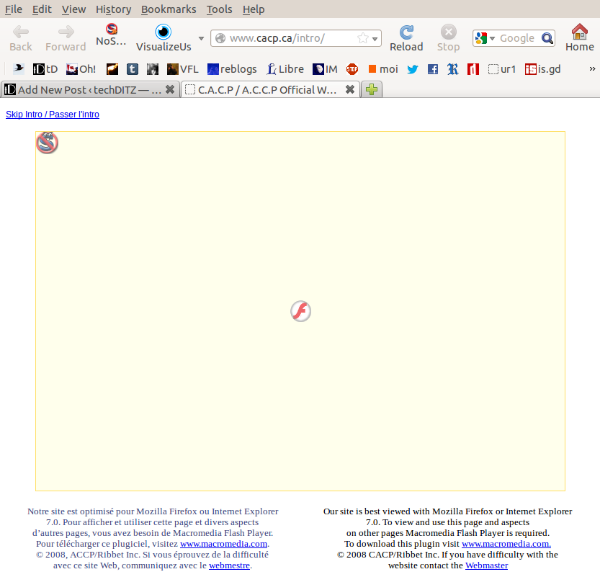Dear Sir Tim Berners-Lee and the World Wide Web Consortium:
Re: Keep DRM out of Web standards — Reject the Encrypted Media Extensions (EME) proposal
As a middle aged mother, I’ve been learning (and sharing what I’ve learned) about net neutrality, the importance of free software, free culture, nd an open Internet, ever since I began hand coding my own HTML web pages and participating on the Internet in 2009. As a creator from a creative family, as well as publishing my own content online, I run a blog for my eighty three year old father. I have come to consider myself a netizen.
One reason DRM is dangerous is that it can hide all manner of spyware and malware from users. Another is that most people don’t even know what it is, or if they do, how to recognize it. While governments have allowed large corporations and media conglomerates to cripple digital products with DRM, there is no requirement anywhere in the world to to inform customers or computer users of such application.
I have avoided DRM wherever possible, but even with the absurd extension of copyright laws, I have been certain that free culture will win out eventually. But that confidence presupposes a free market.
In Canada where I live, our new Copyright Act makes it illegal to circumvent DRM for any reason at all, even if the the circumvention is allowed under our “fair dealing” exemptions, or if the DRM is applied inappropriately. I consider the application of DRM to freely licensed or public domain creative works to be inappropriate.
This is a huge concern for me, both as a cultural consumer and as a self publishing author. Existing copyright law has prevented me from even seeing the finished production of one of my own works.
Independent creators and Internet users are already at a huge disadvantage, because the large media special interests have the wherewithal to successfully lobby governments around the world into maximizing copyright laws and the attendant copyright monopoly to their own great benefit, at our expense.
These large and powerful special interest groups have long had a seat at the W3C table. But where is there representation for Internet users?
Most of the public does not even know W3C exists, let alone how to comment on an issue such as this. Although I am passionately interested in the subject, until I read Harry Halpin’s Guardian article last week, I had no idea there was any way for Internet users or creators to express our dismay beyond signing the Defective By Design’s “Keep DRM out of Web standards — Reject the Encrypted Media Extensions (EME) proposal” Petition. But Mr. Halpin pretty much implies that petition wasn’t enough.
Although Canada has been a world leader in Internet adoption, most Canadians are still not online. For most of those who are, participation on Facebook signifies the height of technical prowess. Certainly most Canadians haven’t even heard of the Guardian, and so will not have even read the article.
Mr. Halpin essentially gave me the weekend to get the word out. This weekend Identi.ca, the social network of choice for a great many people who are aware of these issues, is undergoing a massive migration from a backend of StatusNet to pump.io software. Many users like myself have been consumed in setting up our own federated status net instances. As well, those of us with privacy concerns have been caught up in the NSA Prism news story. For myself, I’ve had two major family happenings this weekend in addition to those online issues.
Maybe a few people who understand the issue will have read the blog post I wrote, but a weekend is not much time. Especially considering that the special interests that want DRM written into the Web Standard have been at the table for so very much longer.
Until the W3C holds a widely publicized meaningful consultation process, that Free Software Petition must be given at least as much weight as the opinions of any other group of stakeholders. Perhaps more, since the inclusion of DRM in the standard panders to the direct benefit of a specific special interest lobby group. Internet Users are easily the largest group of stakeholders, and our exclusion from the process means that the W3C must look out for the public good.
Keeping even a whiff of DRM out of the Web Standard will not harm the corporate special interests who lobby so effectively for it. They can just continue on as they have been, locking their own content behind DRM. Allowing the DRM toehold EME provides will lead to DRM becoming the default.
DRM exists to break interoperability. If DRM is allowed into the W3C Standard, it will become the W3C Standard. If W3C supports this, it will sacrifice the free and open Internet, not just for us, but for generations to come.
Please don’t do this.
Regards,
Laurel L. Russwurm
Tag Archives: HTML5
Online Accessibility
When we talk about accessibility issues, it usually means accessibility for people with disabilities. The internet has tools like speech readers, that can make it accessible for the blind. Subtitles or closed captioning can make online video accessible for the deaf. I learned early in my blogging career that typing a description in the alt=”” field, allows speech readers to tell visually impaired users what images I use. It’s a little more work, but it’s worth it if I can make my contect accessible.
But there are other accessibility issues that have nothing to do with disability.
standards
Internet standards are still evolving, but the internet works, because at its heart, every web page uses a programming language called HTML. Just as every email we receive should be readable, every website we visit should work, no matter what browser we are using, because the data is in HTML.
making html inaccessible
I just went to check out a website called C.A.C.P./A.C.C.P. Official website. Although I am using this particular site as an example, this is certainly not the first time I have been annoyed by a website that wants me to remake my computer to accommodate it.
I’m pleased to see this official Canadian Website is bilingual. But this is what I see:
security
 The large yellow square in the middle of the webpage indicates this is something NoScript has blocked. NoScript is a browser plug-in that prevents Javascript and Flash from running unless I grant it permission. Javascript allows files to execute, or run, on your computer. That’s one way people get viruses and spyware. NoScript blocks such “active” content, but if I choose to trust the source, I can decide to allow it with a mouse click. The other thing I tend to avoid is Flash for a couple of reasons.
The large yellow square in the middle of the webpage indicates this is something NoScript has blocked. NoScript is a browser plug-in that prevents Javascript and Flash from running unless I grant it permission. Javascript allows files to execute, or run, on your computer. That’s one way people get viruses and spyware. NoScript blocks such “active” content, but if I choose to trust the source, I can decide to allow it with a mouse click. The other thing I tend to avoid is Flash for a couple of reasons.
cost
Flash video consumes a fair bit of bandwidth; so if your internet use is capped, as many are these days, NoScript allows you to decide whether to display the flash ads or video on your computer.
freedom
For me the more compelling reason is that Flash is proprietary software, and as a free culture advocate I prefer my web content in free or open formats.
my choice
If I do want to see this video, I can choose to click on the letter f in the centre of the page and grant it permission. But this is my first time here. Why would I do that? I don’t know this site, or who runs it personally. Is it really run by CACP? Why should I trust it? Do I have a compelling reason to gamble my computer security?
Not hardly.
Then I look at the text displayed under the blocked video.
Our site is best viewed with Mozilla Firefox or Internet Explorer 7.0. To view and use this page and aspects on other pages Macromedia Flash Player is required.
To download this plugin visit www.macromedia.com.
© 2008 CACP/Ribbet Inc. If you have difficulty with the website contact the Webmaster
I should not have to use a particular browser to see a web page display properly.
Or worse, download specialty software to use it.
Instead of telling me that I have to use a particular browser, if the web designer was doing her job, the page should display properly on any browser.
If it’s a mess, I’m certainly not going to switch browsers to something one website tells me I must have. If I had to do that for every website I visited, I might not have room for my own files on my computer. Besides, I prefer to learn from those who know what they are doing, and try to avoid taking direction from those who don’t.
And of course, Macromedia Flash Player is proprietary software owned by www.macromedia.com, so that is hardly in keeping with my free software leanings. The webmaster might have chosen an open format like OGG Theora or the new HTML5 instead. But even if they choose to make their video available in such a closed format, if they want to make the site accessible, the web page shouldn’t be broken, as this page is.
To make it work, at minimum there needs to be text providing a synopsis of what is in the video. The best case scenario would also include the full text of the script along with any necessary written description of the visual content.
If they want to make it accessible, that is.
If they don’t want to make it accessible, if the sense of entitlement is such they believe they have the right to dictate such things to vistors, they can tell us that we must conform to their demands if we want to see the content. Their way or the highway.
Of course, this is a little nicer than some, because there is a small “skip this intro” link in the top left corner of the screen. This way I can skip over the content they can’t be bothered to make accessible.
Personally, I’d rather just skip it.


